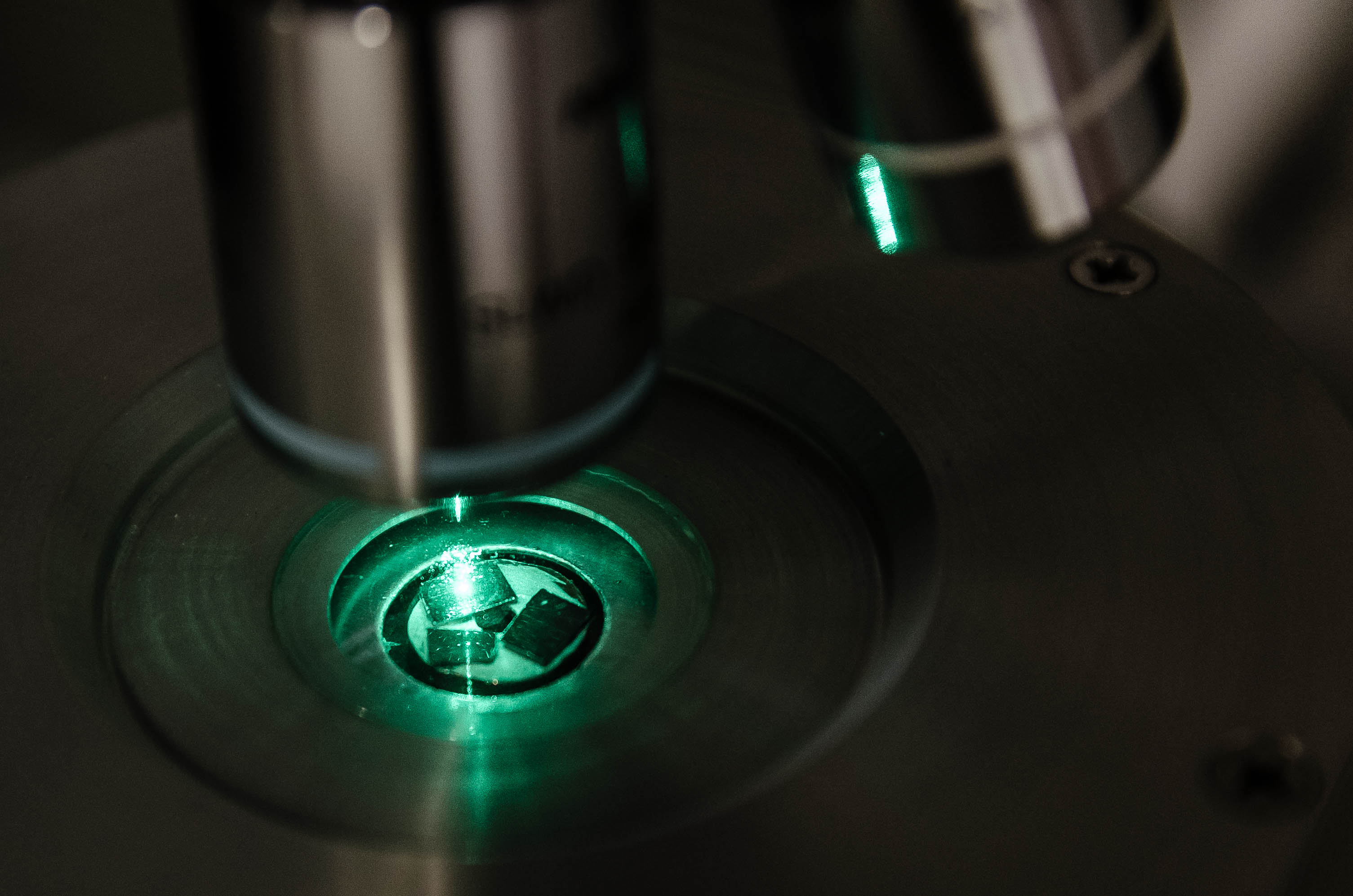Researchers from Nanyang Technological University (Singapore) have published a paper in Nature in which they describe a new cooling system that uses lasers instead of refrigerant.

Material being cooled by laser.
Along with the common refrigerator, this new technology presents possibilities for plenty of other uses, including MRI machines, night-vision goggles, and satellite cameras. All of these technologies require some form of cooling system, and if the new laser-based solution is introduced into their design, they could be made smaller and more efficient.
Most worth noting is the possibility that laser cooling could lead to a new form of computer chip that could cool itself on its own. Having this sort of functionality would allow the technology to minimize the amount of heat it produces which, in turn, would help prolong the battery life of devices like smartphones and tablets.
How it works
In the paper, Assistant Professor Xiong Qihua of the School of Physical and Mathematical Sciences and the School of Electrical and Electronic Engineering at NTU, described cooling a semiconductor from 20 degrees Celsius to -20 degrees Celsius. The paper specifically describes using a material called “cadmium sulphide,” a type of group II-VI semiconductor that is commonly used in solar cells, sensors, and other electronics. How the laser works in conjunction with the cadmium sulphide to create a cooling effect, is described in their paper’s abstract:
We attribute the net laser cooling in cadmium sulphide nanobelts to strong coupling between excitons and longitudinal optical phonons (LOPs), which allows the resonant annihilation of multiple LOPs in luminescence up-conversion processes, high external quantum efficiency and negligible background absorption.
Professor Xiong and his team conclude with how they foresee the technology being put to use:
Our findings suggest that, alternatively, group-II–VI semiconductors with strong exciton–LOP coupling could be harnessed to achieve laser cooling and open the way to optical refrigeration based on semiconductors.
“If we are able to harness the power of laser cooling, it would mean that medical devices which require extreme cooling, such as MRI which uses liquid helium, could do away with their bulky refrigerant systems with just with an optical refrigeration device in its place,” Professor Xiong explains.
“Not only that, but it would also remove the need for compressors and coolants in air-conditioning and refrigerators used in our homes and automobiles, saving space, energy and greenhouse gases which are harmful to our ozone layer.”
Outlook
Seeing this technology through to development could be huge, especially when considering that the global market for energy-efficient buildings is estimated to be over $100 billion come 2017 (according to reports put together by the Global Industry Analysts).
Currently, Professor Xiong is leading a research team of 25 people as they now look to bring laser cooling down to liquid helium temperature (–269ºC) because in principle and theory, semiconductors are still able to function at such low temperatures.
“Our initial results published in Nature, have shown that it is possible to laser-cool a semiconductor to liquid nitrogen temperature, so we are aiming to reach an even lower temperature, such as that of liquid helium,” he explains.
Review the paper (purchase-fee), Laser cooling of a semiconductor by 40 Kelvin, at nature.com
Story via: ntu.edu
Advertisement





